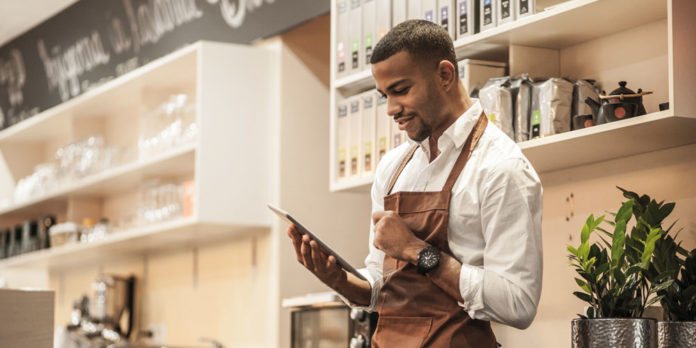Wholesalers are ‘e-shocked’ and are missing out on transactional opportunities thanks to poor websites, says David Gilroy.

Britain’s towns are e-shocked, to quote the term used by Michael de Kare-Silver, who has written a book on the subject. Unless you run a nail bar, a hairdresser or a charity shop, the prognosis for you on the high street is not good. It appears that all the retail sales growth is coming from online and digital. The trick, therefore, is to make the electronic shopping experience easy and compelling, and to make a profit in the process.
With a group of online retailers, I recently attended a technology briefing hosted by online retail expert Summit, along with luminaries from Google and fellow search engine Bing. I’m sure you know the line: ‘If you’re the smartest person in the room, you’re in the wrong room.’ I quickly realised that I was in absolutely the right room!
Summit has dedicated 16 years to working with some of Europe’s most successful retailers, studying how best to shape the online customer experience. They have identified some interesting online trading facts in the past year. Here are a few:
- £1bn in abandoned sales due to the lack of a guest checkout
- £1bn in lost revenue due to poor site speeds
- Supermarkets outperform fashion retailers in social media engagement.
Summit’s Online Retail Scorecard measures online performance and the factors influencing profitability and growth. Its retail online assessment asks four key questions:
1. How easy is it to buy from your business?
2. How close are you to your customers?
3. How appealing are you to your customers?
4. Do you delight your customers?
Underpinning these questions is a structure of assessment points that measure online performance in the four key areas:
1. Ecommerce and technology
2. Online marketing
3. Trading (the proposition)
4. Logistics and services.
Summit’s assessment of Europe’s leading retailers has uncovered a few surprises, as well as many learnings.
For example, the web/app experience needs to be as smooth and simple as possible for the user. Barriers and hurdles such as membership validations and ‘human checks’ will result in aborted transactions. That means:
- Guest checkouts are essential
- Web pages must load in no more than three seconds
- Consumers now expect online video engagement
- Many operators are poor at social media engagement
- Some retailers, even famous names, are falling short at stock fulfilment.
Online trading requires a completely different business mindset, because performance is managed using more immediate digital metrics, such as page impressions, session times, bounces, funnelling and abandon rates.
It is not enough just to shove up a website or launch an app and then leave it there. Constant review is important, starting from the user experience, and working back through the online journey to order fulfilment.
This is the ‘now’. Coming very soon will be assisted-purchasing using bot technology, and deep predictive learning predicated on consumer behaviours.
How does all this apply to wholesale? Well, I have taken a tour around some of wholesale’s online offerings. I know it is a different world, and everyone is concerned about membership security and paranoid about price, but here is my own assessment:
- Some operators do not yet have transactional websites
- Most websites stack up a whole bunch of obstacles to entry
- None has a guest checkout
- Many have missing product images
- Some have an identity crisis – are they trying to sell goods or communicate the corporate message?
- Very few offer video clips or actively engage with the user
- A number are peppered with ads, which confuse and detract from the offering
- Only a few have a transactional app.
Wholesale online trading seems to be e-shocked – relegated to an add-on rather than the main event. For some, this is also true of deliveries. Trading opportunities are being spurned.
With a brooding Amazon lurking in the shadows, maybe it’s time for an Online Wholesaler Scorecard?








